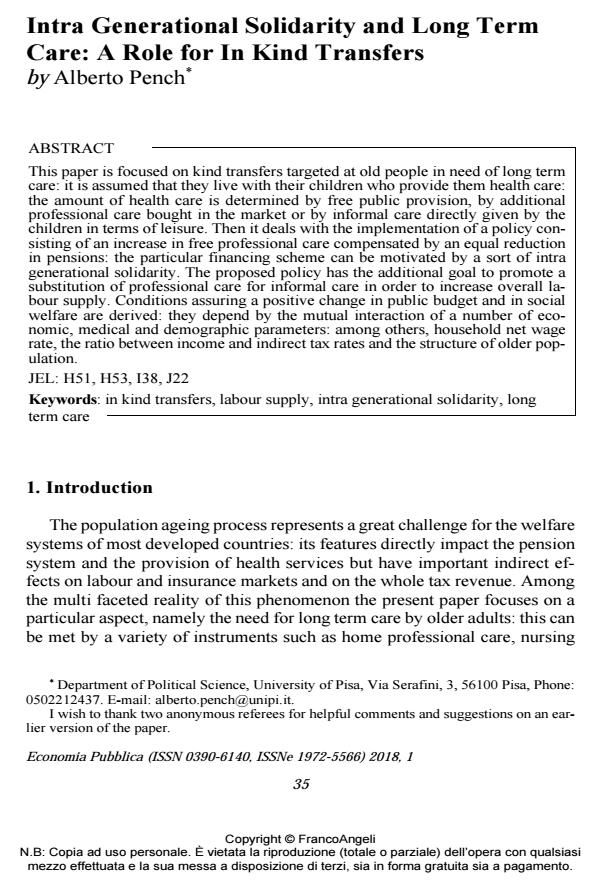Intra Generational Solidarity and Long Term Care: A Role for In Kind Transfers
Titolo Rivista ECONOMIA PUBBLICA
Autori/Curatori Alberto Pench
Anno di pubblicazione 2018 Fascicolo 2018/1
Lingua Inglese Numero pagine 23 P. 35-57 Dimensione file 245 KB
DOI 10.3280/EP2018-001002
Il DOI è il codice a barre della proprietà intellettuale: per saperne di più
clicca qui
Qui sotto puoi vedere in anteprima la prima pagina di questo articolo.
Se questo articolo ti interessa, lo puoi acquistare (e scaricare in formato pdf) seguendo le facili indicazioni per acquistare il download credit. Acquista Download Credits per scaricare questo Articolo in formato PDF

FrancoAngeli è membro della Publishers International Linking Association, Inc (PILA)associazione indipendente e non profit per facilitare (attraverso i servizi tecnologici implementati da CrossRef.org) l’accesso degli studiosi ai contenuti digitali nelle pubblicazioni professionali e scientifiche
This paper is focused on kind transfers targeted at old people in need of long term care: it is assumed that they live with their children who provide them health care: the amount of health care is determined by free public provision, by additional professional care bought in the market or by informal care directly given by the children in terms of leisure. Then it deals with the implementation of a policy consisting of an increase in free professional care compensated by an equal reduction in pensions: the particular financing scheme can be motivated by a sort of intra generational solidarity. The proposed policy has the additional goal to promote a substitution of professional care for informal care in order to increase overall labour supply. Conditions assuring a positive change in public budget and in social welfare are derived: they depend by the mutual interaction of a number of economic, medical and demographic parameters: among others, household net wage rate, the ratio between income and indirect tax rates and the structure of older population.
Parole chiave:In kind transfers, labour supply, intra generational solidarity, long term care
Jel codes:H51, H53, I38, J22
Alberto Pench, Intra Generational Solidarity and Long Term Care: A Role for In Kind Transfers in "ECONOMIA PUBBLICA " 1/2018, pp 35-57, DOI: 10.3280/EP2018-001002